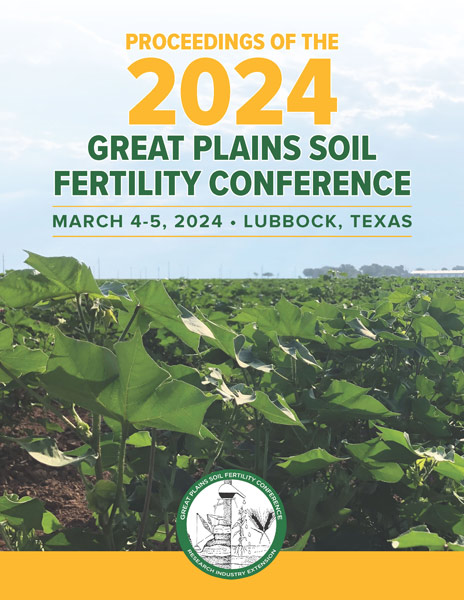Conference Proceedings Available!
The 2024 Great Plains Soil Fertility Conference Proceedings Book is now available! Click the link below to view the full document!
Proceedings
Authors
| Filter results1 paper(s) found. |
|---|
1. Adjusting N Rate is the First Step in N Management IntensificationNitrogen (N) management and sowing date are among the leading causes for winter wheat (Triticum aestivum L.) yield gap in Kansas. This research aimed to compare the two most common cropping sequences in Kansas (continuous wheat [Ct-Wt] and double-cropping of winter wheat and soybean (Glycine max (L.) Merrill) [Wt-Sy]) under two N management (standard and progressive) on wheat production. Standard N management consisted of one single broadcast N application as UAN at 80 lbs ac-1 at... L. Simao, R. Lollato, D. Ruiz diaz |
